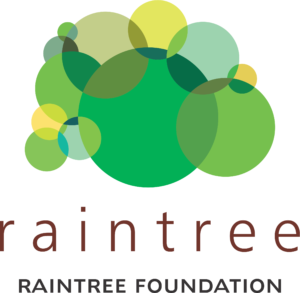Raintree Foundation will be listing first of its kind Clean Energy project on Social Stock Exchange (SSE)
Raintree Foundation is registered on Social Stock Exchange (SSE) with BSE since July 2023. Raintree has always focused on building sustainable resilience by creating long-term impact through transparent, meaningful and measurable outcomes. We are one of the very few non-profits that cover all 17 Sustainable Development Goals (SDGs) as prescribed by the United Nations (UN). The SSE platform provides organisations like ours a conducive environment for seeking partnerships for achieving these goals and creating lasting impact.
SSE not only helps the growing investment market but also enables a more regulated capital market in India. It also makes impact investment more accessible through performance-based philanthropy.
Address Energy Poverty in Rural Maharashtra
Raintree Foundation will be listing a ZCZP bond on the Social Stock Exchange: a ‘first of its kind’ solar energy investment opportunity that will address energy poverty in rural Maharashtra, reduce GHG emissions and boost the rural economy, thereby contributing to the Climate Action agenda.
The scope of the project is to solarise community assets as well as livelihood assets in 9 villages in Velhe Taluka, Maharashtra through use of Solar PV systems. These villages currently face erratic power supply that severely impacts access to basic amenities and their daily livelihood.
Key objectives for Raintree Foundation’s Clean Energy project in Velhe
- Reduce energy poverty, i.e. provide a consistent, clean electricity source for remote areas with unreliable power supply
- Boost rural economy and local nano entrepreneurship
- Reduce greenhouse gas emissions (GHGs) by promoting the adoption of solar power
Project Scope
Raintree Foundation will meet the objectives by solarising
Community Owned Assets
- Community Spaces and Primary Healthcare Centres
- Academic Institutions and Gram Panchayat Offices
- Solar Water Pumps
Livelihood Assets
- Solar Dryer for Vegetables
- Solarised Egg Incubators
- Solar Bubble Dryer for Rice
- Solar Milk Chillers
- Integrated Solar Cold Room

Proposed Impact of the Project
- Projected generation of ~210,000 (kwh) of clean energy annually
- Reduction in post-harvest losses by 50% due to solarisation of livelihood assets
- Estimated reduction of ~3,400 tons of GHG emissions over 25 years


Disclaimer — For further information & risk factors please refer Fundraising Document on the BSE SSE website
Policies & Financial Reports for Public Perusal
Audited Financial Statements
Audited Financial Statements
Steps to subscribe to ZCZP on SSE
Ensure you have a Demat account with either NSDL or CDSL. This is necessary for the allocation and holding of the ZCZP instruments. Include details of a valid and active DP ID and Client ID in your application.
The minimum investment amount is Rs. 10,000, equal to the face value of 10,000 ZCZP instruments.
- Fill out the application form carefully. You can find the form on the NSE’s website or obtain it through authorized brokers.
- Ensure to read the terms and instructions provided in the Final Fund Raising Document before filling out the form.
- Include your personal details, investment details, and specify your investor category.
- Payment Methods:
- If paying by cheque or demand draft, attach it with the application form.
The form must be signed by the sole or first applicant. If the depository account is held in joint names, include the name and PAN of the person whose name appears first in the depository account. Only this person’s signature is required on the application form.
For electronic transfers, make the payment electronically and mention the UTR number and the transfer date on the form for tracking purposes.
- If paying by cheque/demand draft, submit the completed application form along with the payment to the Registrar’s Office before the closing date.
- For electronic payments, ensure the transfer is completed, and the application reaches before the issue closing date.
The issue opens on 6th March 2024 and closes on 11th March 2024. Ensure your application, along with the payment, is submitted before the closing date to avoid any last-minute issues.
Keep the acknowledgement slip, which includes payment details and applicant information, for your records. This serves as proof of your application submission and payment.
India’s primary climate action focus is on significantly increasing its renewable energy capacity, with a particular emphasis on solar power development. We invite you to be part of the nation’s priority by elevating 4000+ community members from energy poverty towards energy self-sufficiency.

